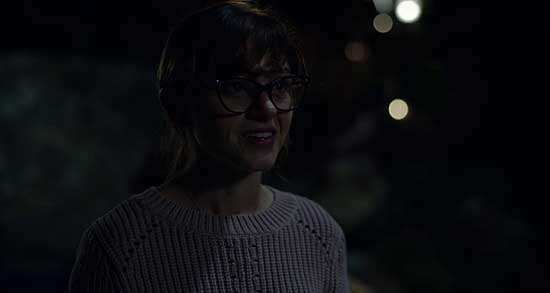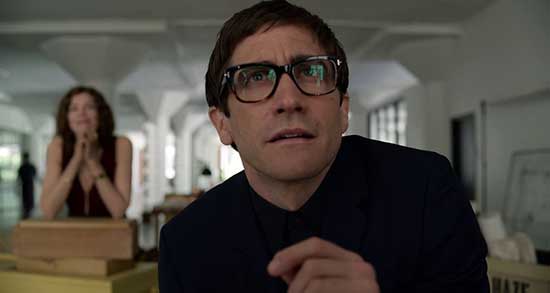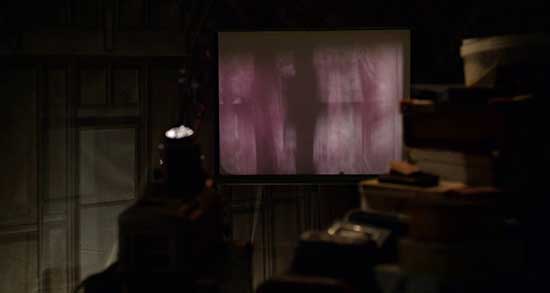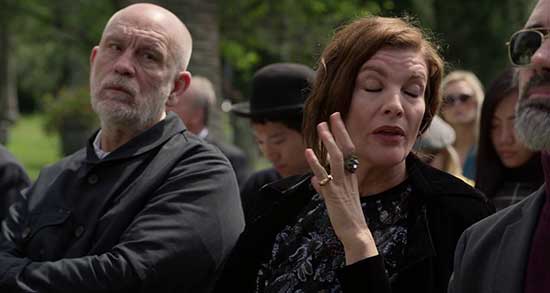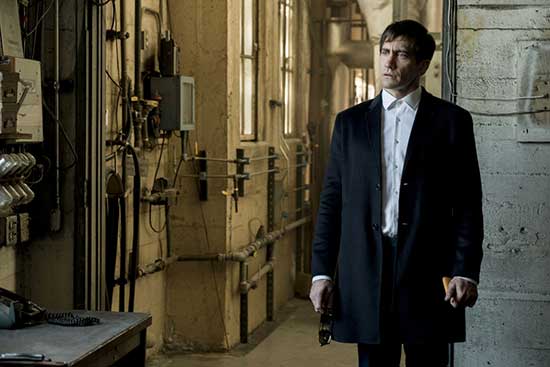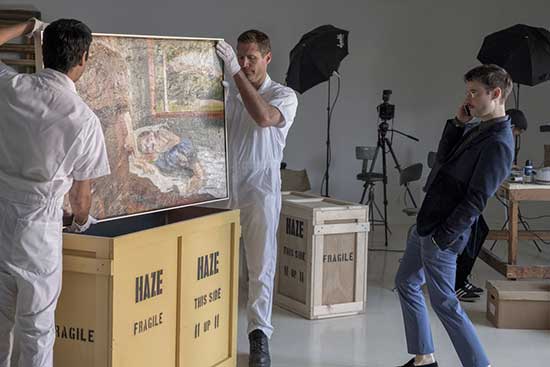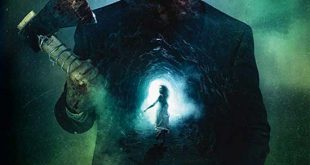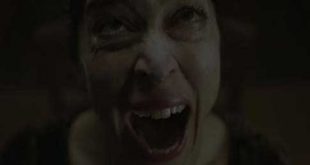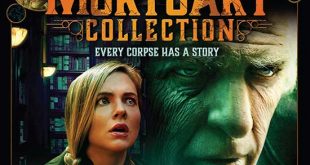SYNOPSIS:
A supernatural force sets out to exact revenge against art profiteers attempting to exploit a series of paintings by an unknown artist.
REVIEW:
At the risk of going too far out on a limb, let me start this review with a statement:
“Velvet Buzzsaw” is not a horror movie.
I know a good number of people will argue that it is and that it isn’t a very good horror movie. Taken as a horror movie and nothing more, I would strongly agree that it isn’t very good. Corman’s “Bucket of Blood” works better as a horror film because that was the point of it; any commentary on art and its followers was secondary, even if the film was intended to be a comedy.
“Velvet Buzzsaw” is a different creature.
The film tells of a group of art critics, gallery owners, media manipulators, and art brokers who come upon a collection of paintings by a reclusive artist who ordered all his work be destroyed upon his death. Of course, the paintings are not destroyed, but become the greatest art find in decades. Yet everyone who attempts to use the art for their own purposes meet rather unusual fates.
The plot seems to meander a bit throughout the film’s run as we are following various characters who are moving in their own story arcs and interact with the other characters in scenes that wouldn’t be too out of place in an art world version of Richard Linklater’s “Slacker”. By the time people start to realize that the paintings they are fawning over are killing folks, their fates have been sealed, so the whole final act of the film seems almost offered as a perfunctory ending for all the horror elements introduced earlier in the film.
Some of the deaths are interesting and make for some delightfully twisted set pieces, with the auto mechanic monkeys being one of the best. The downside is that each character is shown to be awful as a human, so you don’t have any tension when they are targeted by the power of the paintings. At no point do any of the characters seem inclined to find a way to stop the deaths or avoid their fates, so, again, the viewer doesn’t see any valid concern for others and/or themselves in the characters, thus removing even an elemental need to see the threat resolved.
Too be an effective horror story, there has to be feeling, some emotional connection for the audience. In this film, no attempt to build such a bridge is made.
Yeah, not the best comments to make about a horror film. If I were making the above comments about the most recent Hellraiser flick, it would be time to close the lid and move on.
“Velvet Buzzsaw” is not a horror movie. It uses the “horror movie” as the delivery system for the real film. Sort of like the classic exploitation films claimed to draw a moral line between decency and the corrupt behavior the film supposedly took issue with, but we all know they banked on the smut to put butts in seats.
“Buzzsaw”, from the opening scene backed by a jaunty, friendly tune, knows that it has one primary purpose – satire. Actually, almost classical satire, like Jonathan Swift’s “Gulliver’s Travels” and Mark Twain’s “Huckleberry Finn”, which used the picaresque novel’s framework to show the folly of various groups and ideals. This film takes all of its characters to task, with only those whose intention towards art is appreciation and acceptance being spared.
While it could be said that writer/director Dan Gilroy aimed at the art world with his satire, I tend to think his comments are directed at the same people attached like leeches and barnacles to music, cinema, literature, or any creative endeavor. He has stated that part of his inspiration came from his work on the cancelled Superman film that would have starred Nic Cage as the hero in tights. The film was cancelled by executives while Gilroy and others were left with all their work amounting to a waste of time.
So, “Velvet Buzzsaw” slices into the non-creatives who hold more power than the creators.
Renee Russo plays Rhodora Haze, a former member of the punk group Velvet Buzzsaw (already indicating a nod/ripoff of The Velvet Underground), who turned from creating art to marketing it. Morf Vandewalt, played beautifully by Jake Gyllenhaal, is an art critic who has embodied his aloof analytic self to the point that he cannot interact with others without putting the experience in the language of art and critical analysis. Josephina (Zawe Ashton) has no artistic ability but uses the art of others to finance her own desire for recognition and riches. Jon Dondon (Tom Sturridge) is another gallery owner who is more focused on getting one over on Rhodora than the actual artwork in his gallery. Gretchen, another great and concise role for Toni Collette, has worked in a museum for years protecting art for future generations, but even she craves the wealth and fame that major players in the art field wield.
Every major character who uses, abuses, and manipulates art, especially the art of Vetril Dease (the deceased artist in the film), suffers. As you can see from the descriptions above, the characters really have as much to do with art as a fish has to do with unclogging toilets, but it is their influence and opinions that decide the fate of those who actively create the art these vultures circle. They can destroy both sales and careers as easily as they can bestow “celebrity”. By their words and actions, art is realized or ignored. Their actions are bred of pettiness and self-serving desires. Art is merely the commodity in which they deal.
“Velvet Buzzsaw” not only shows the people behind these manipulations to be flawed and unworthy, but it finds the bulk of the community more in tune with those talking about art than the artists themselves. That has become reality when you have people being asked to answer to Twitter comments unrelated to, and years removed from, their work in music, film, or art of any sort. We believe what we hear about actors, writers, singers, painters, etc. without considering their art as a separate entity.
Yet here I am, attempting to pass comment on a piece of work I did not create, and I cannot help but think of the George Bernard Shaw quote “He who can does; he who cannot, teaches.” with the codicil: “Those who can do neither, criticize.”
Final take on “Velvet Buzzsaw”? A poor horror movie but a delightful send up of those who profit from art without ever having to dirty their hands by creating it.
 Horror News | HNN Official Site | Horror Movies,Trailers, Reviews
Horror News | HNN Official Site | Horror Movies,Trailers, Reviews


